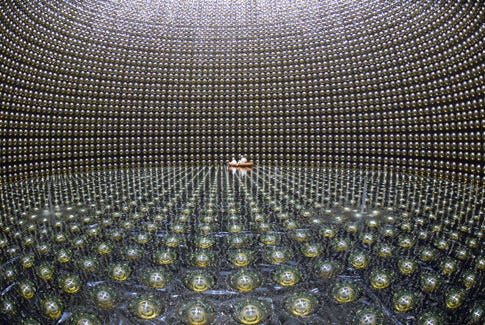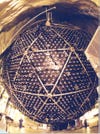World’s Most Sensitive Neutrino Experiment Launches, To Seek Answers About Matter’s Origins
The questions that plague particle physicists and cosmology buffs seem fundamental, but it’s startling how little we really know about...

The questions that plague particle physicists and cosmology buffs seem fundamental, but it’s startling how little we really know about some of them; for instance, why does matter exist? Researchers in Japan are undertaking the most sensitive subatomic particle experiment ever ventured in attempt to get to the bottom of that question, shooting neutrinos nearly 300 miles under the mountains, straight through the bedrock under Japan to a detector on the opposite coast, in an attempt to hash out exactly why neutrinos appear to spontaneously change from one kind to another.
Why? According to what we “know” about the universe, there should be roughly the same amount of matter and antimatter in the universe, but since the two destroy each other that would mean the universe should be a massive radioactive mess. Instead, the universe is obviously populated with an abundance of matter; we’re not sure why, but physicists speculate that there must be some law of physics operating at the subatomic level that is different for matter and antimatter.
The “T2K” experiment — short for Tokai-to-Kamioka — is beaming high-powered streams of neutrinos from a particle accelerator in Tokai village to the Super-Kamiokande detector nearly 300 miles away. Neutrinos don’t engage with matter for the most part, but every now and again one smashes into an atomic nucleus in the detector. Researchers at the receiving end can then measure how many muon neutrinos in the beam are changing into electron neutrinos, hoping that observing these oscillations will shed some light on that discrepancy in physical laws.
By comparing what they find out about neutrinos to anti-neutrinos, researchers might be able to figure out why anti-matter has received the short end of the stick in the cosmos, and hence why the universe is — fortunately for us — so full of sweet, sweet matter.

Super-Kamiokande

Liquid Scintillator Neutrino Detector

Sudbury Neutrino Detector

Antarctic Impulsive Transient Antenna